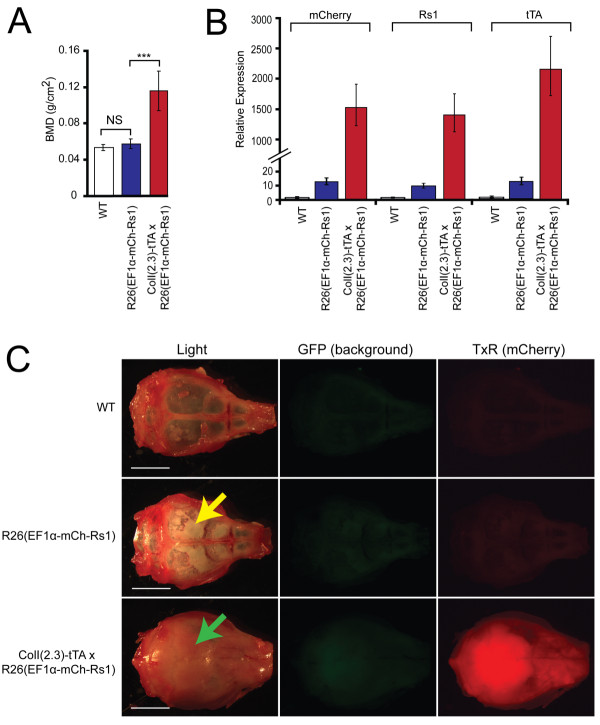Figure 4.
A single copy of the EF1α-tTA regulator region weakly drives expression of a TetO transgene in mice. (A) Areal bone mineral density by DEXA of nine-week-old mice shows that the ColI(2.3)-tTA x R26(EF1α-tTA/TetO-mCh-Rs1) mice have increased bone mass. N = 9 WT, 5 R26(EF1α-tTA/TetO-mCh-Rs1), and 9 ColI(2.3)-tTA x R26(EF1α-tTA/TetO-mCh-Rs1) mice. ***, P < 0.0001 vs. wildtype (WT). (B) RNA expression levels of Rs1, tTA, and mCherry in the humeri of nine-week-old ColI(2.3)-tTA x R26(EF1α-tTA/TetO-mCh-Rs1) and littermate controls, showing highest expression in the double-mutant mice. Error bars represent means of technical qPCR triplicates +/- 1 SD. (C) Fluorescence images of calviaria from representative 16-week-old littermate mice showing strongest mCherry expression [assessed in the Texas Red (TxR) channel] in ColI(2.3)-tTA x R26(EF1α-tTA/TetO-mCh-Rs1) but not wildtype littermates. Although mCherry was not clearly detected in the R26(EF1α-tTA/TetO-mCh-Rs1) calvaria, subtle increases in the mineralization of the skull bones (white patches, as indicated by the yellow arrow) are present indicating functional responses to Rs1. The level of bone formation is lower than that seen in the ColI(2.3)-tTA x R26(EF1α-tTA/TetO-mCh-Rs1) (green arrow), where additional activation of the Rs1 transgene is achieved by adding osteoblast-specific expression of the tTA element.

